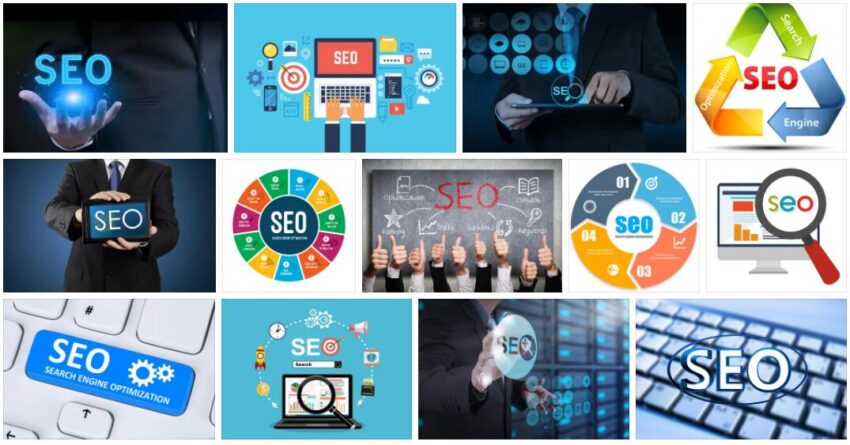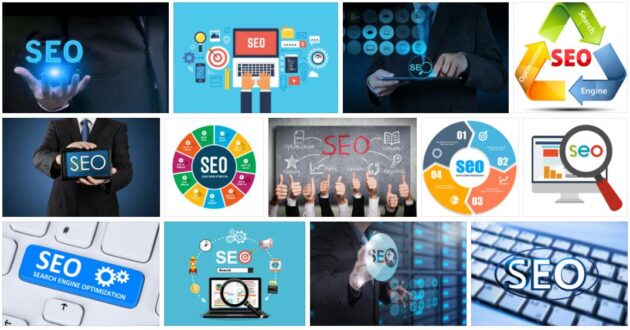Which SEO areas are there?
Search engine optimization can be divided into the following areas:
- OnPage optimization
- Off-page optimization
- Keywording
- Information architecture
- Technical SEO
- Content marketing
- SEO KPIs
- Mobile SEO
If you are looking for a rough classification, this can be done in OnPage Seo and OffPage Seo.
OnPage optimization
The OnPage optimization is in the hands of the website operator. On Page Seo means taking measures that lead to a better evaluation of your own website in the search engines.
The following factors encompass this area:
- Clarity and ease of use of the website
- appealing SEO text with added value for the reader
- matching page title
- Meta Title and Meta Description
- Structure of the headings
- internal link building
- Website loading time
OffPage optimization
The external parameters of a website are summarized under OffPage Optimization. This includes external links, also known as backlinks. Backlinks are a crucial ranking factor. The search engines rate backlinks differently, so the quality of the link building is particularly important.
The following factors encompass this area:
- Backlinks
- Click rate
- Length of stay
- Bounce rate
What are the differences between SEO, SEA and SEM?
According to aviationopedia, search engine marketing (SEM) can be divided into the sub-areas of search engine optimization (SEO) and search engine advertising (SEA).
The following differences become clear between the two sub-areas:
- Search engine advertising is billed variably, for example with cost-per-click .
- Search engine optimization is usually subject to a project-related form of billing and is not free of charge.
- SEA has clearly defined key figures and the costs are easy to understand.
- SEO includes various measures that should lead to a high ranking position. However, there is no guarantee that the strategy will be implemented.
- SEO is focused on specific search terms. SEA extends this framework to related terms.
SEO
SEO optimizes websites. The alignment and structure are based on the user’s experience and the specifications of the respective search engine. The aim is to generate certain search terms in order to get results from the search engines that are oriented towards them.
SEA
With SEA it is less relevant which structure and which look the website has. Rather, it is about the creation of certain ad groups that bundle topic-specific search terms. After entering them in the search line, these lead to an advertisement. Google Ads are visible above, below or to the right of the search results displayed. It is marked with the word “display”.
The characteristics of SEO and SEA at a glance:
| SEO | SEA |
| Unpaid search | Paid search |
| Long-term orientation | Quick setup |
| Ease of use has priority | Supply and demand affect costs |
| Ranking based on the Google algorithm | Full cost control |
What KPIs are there for SEO?
Certain SEO key figures are called KPIs. You should rethink the optimization of the most important key figures, because you can safely neglect some KPIs. With some key figures, direct influencing is easier to implement than with others.
The following KPIs are relevant and can be influenced directly:
| KPI | Explanation |
| Click rate | The click rate provides information on whether there is sufficient demand for the search result. The click rate is directly related to the ranking and helps you to reflect how your target group reacts to the formulations and arguments contained. |
| Bounce rate | The bounce rate shows how many users have left the page without having done anything. This key figure is particularly helpful for shop owners. However, when it comes to pure content, you can neglect the bounce rate. |
| Pimp my time on site | The exact length of stay on the website corresponds to the proportion of users who deal intensively with the content of your website. If you deliver content and problem solutions, a longer retention time speaks for the quality of the content. |
Who is SEO for?
SEO is indispensable for anyone who wants to run a professional website and want to sell something or encourage readers to delve into the content. Search engine optimization brings you more visitors and ultimately a larger number of potential customers who are directly interested in your product or service.
As a self-employed person, you will need your own website. As a founder, you urgently need customers and you have to represent in order to make yourself known. A website acts as a virtual business card. It is actually of secondary importance whether you actually run an online shop or want to make a name for yourself as a craftsman, freelancer or restaurateur.
Tip!
If you want to become self-employed, we have a lot of tips and instructions on how you can register your own business .
SEO has priority right from the start and can pay off for you in the long term. In Germany alone, more than 100 million search queries are assumed every day. A significant portion of it could be precisely targeted towards your product or service.
Without SEO optimization you never get together and the potential customer chooses the competition, not because it is better, but because the Google ranking assigns you a better position.

